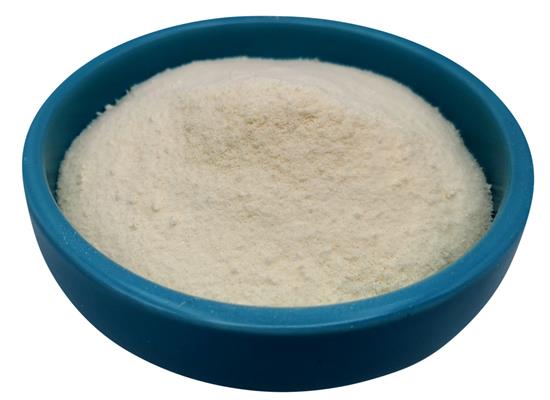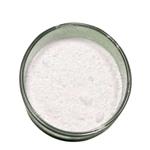Aminophylline: Clinical Applications and Adverse Effects
Aug 8,2024
General Description
Aminophylline, a combination of theophylline and ethylenediamine, has historically been used for asthma and COPD but has recently shown promise in pain management, particularly for renal colic and post-dural puncture headache. Studies indicate its efficacy as an adenosine antagonist, providing significant pain relief, including rapid improvement in migraine cases. Its dual role as a bronchodilator and analgesic highlights its therapeutic versatility. Aminophylline generally has a favorable safety profile, with minimal adverse effects at low doses, making it a safer alternative for headache treatment compared to other medications, thereby warranting further clinical research to explore its full potential.

Figure 1. Aminophylline
Clinical Applications
Pain Management
Aminophylline, a compound formed by the combination of theophylline and ethylenediamine in a 2:1 ratio, has been used for decades primarily in managing asthma and chronic obstructive pulmonary disease (COPD). Recent research, however, has expanded the clinical applications of aminophylline to include pain relief, particularly in conditions like renal colic and post-dural puncture headache. Studies have shown that aminophylline acts as an adenosine antagonist, which plays a crucial role in its analgesic properties. For instance, a 2002 randomized double-blinded study highlighted that aminophylline significantly alleviated the pain experienced by patients suffering from renal colic, demonstrating its efficacy in a sample of 70 patients. Additionally, a 2004 study illustrated that aminophylline could mitigate ischemic arm pain, showcasing its potential as a versatile medication in pain management.
The effectiveness of aminophylline in managing post-dural puncture headache has also garnered attention. A systematic review conducted in 2023, summarizing 15 clinical studies, confirmed the therapeutic effect of both aminophylline and theophylline in this context. Notably, a 2011 study involving 60 patients revealed that those treated with a specific dosage of aminophylline showed a statistically significant improvement in pain scores, confirming the compound's utility. This finding was further supported by a case report in 2015, where a patient with a persistent headache achieved complete relief after receiving a low dose of aminophylline. A 2020 study reinforced these results, reporting that 55 out of 65 patients experienced effective pain relief from aminophylline administered over a short infusion. These findings point to the safety and efficacy of aminophylline in clinical pain management, with minimal adverse effects reported during its use. 1
Migraine Relief
Aminophylline's applications extend beyond general pain relief, as it has shown promise in treating migraines. In a clinical observational study, low doses of intravenous aminophylline were administered to patients suffering from acute migraine attacks. The rationale for using aminophylline in this context arose from observations made during a nuclear medicine exercise testing protocol that induced significant headaches resembling migraines in some patients. Recognizing the potential relationship between these headaches and migraine syndromes, researchers began to investigate aminophylline's efficacy for migraine relief specifically. In a case series conducted in 2011 involving 21 emergency department patients, 100 mg of aminophylline was infused, resulting in rapid and often complete alleviation of migraine symptoms. This outcome was particularly notable as many traditional treatments did not yield similar results.
The study highlighted the speed and effectiveness of aminophylline as a migraine treatment option, with patients reporting significant relief within minutes of infusion. Importantly, in cases where a placebo was initially administered, switching to aminophylline resulted in marked improvements, further emphasizing its analgesic properties. Despite methodological limitations, such as the lack of blinding and a control group, the results were compelling enough to suggest that aminophylline could serve as an effective rescue medication for severe migraines. By rapidly addressing not only headache pain but also accompanying symptoms like nausea and fatigue, aminophylline's performance in this context underscores its potential as a valuable therapeutic agent for migraine sufferers. 1
Future Implications
The clinical applications of aminophylline represent a promising avenue for both pain management and migraine relief. Its established role in respiratory conditions is now complemented by emerging evidence supporting its use for various types of pain, particularly postoperative and migraine-related. The dual functionality of aminophylline as both a bronchodilator and an analgesic makes it a unique therapeutic option, particularly in settings where rapid relief is required. Continued research into the mechanisms and optimal dosing of aminophylline will be crucial in maximizing its benefits while minimizing potential side effects. As the medical community continues to explore the boundaries of established medications, aminophylline’s expanded roles offer exciting possibilities in pain management and migraine therapy, warranting further clinical trials and investigations to fully realize its potential in diverse therapeutic contexts. 1
Adverse Effects
Aminophylline generally has a favorable safety profile, especially at low dosages (50 to 150 mg). While theophylline, its active component, has been associated with adverse effects such as nausea, headaches, seizures, and cardiac arrhythmias at higher doses, aminophylline’s adverse effects are significantly less prevalent at the dosages typically administered for headache relief. Studies indicate that when aminophylline is used at low doses, no adverse effects have been reported, highlighting its effectiveness compared to other headache medications like caffeine. Therefore, aminophylline is considered a safer alternative for patients needing treatment while minimizing the risk of adverse effects. 1,2
Reference
1. Phillips BL, Phillips MC. Aminophylline in pain and migraine. Pain Manag. 2023 Dec; 13(12): 723-728.
2. Albert S. Aminophylline toxicity. Pediatr Clin North Am. 1987 Feb; 34(1): 61-73.
- Related articles
- Related Qustion
Rutin is a flavonol abundantly found in plants such as passion flowers, buckwheat, tea, and apple. It is a vital nutritional component of foodstuff.....
Aug 7,2024Plant extractsIn this comprehensive review, we exploring mineral oil origins, properties, applications, controversies, and prospects.....
Aug 8,2024APIAminophylline
317-34-0You may like
- Aminophylline
-

- $500.00/ kg
- 2024-10-15
- CAS:317-34-0
- Min. Order: 1kg
- Purity: 99%
- Supply Ability: 5000
- Aminophylline
-

- $0.00 / 1KG
- 2024-10-14
- CAS:317-34-0
- Min. Order: 1KG
- Purity: 84.0-87.4%,BP2015,USP38
- Supply Ability: 800kg/month
- Aminophylline
-

- $0.00 / 25Kg/Bag
- 2024-09-30
- CAS:317-34-0
- Min. Order: 1T
- Purity: 99%
- Supply Ability: 10 tons





